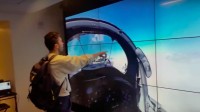Assignment 2: Team 360 Video Pitch
by Prof. Dan Pacheco
- August 27
- in
Due: By midnight, Sunday Feb. 4.
Starting next week, you will be shooting a unique 360 video with a partner with whom you will be randomly assigned. Based on what you learned in class and the examples you've tried from the VR Storytelling Hall of Fame, come up with a concept for a 360 video and put together a plan and pitch.
Your instructor will select four or five videos that will be produced by teams of two starting next week. One lucky videographer will get to shoot her or his own video using the Insta360 Pro.
Post a blog entry labeled Assignment 2: 360 Video Pitch that explains your concept. You should cover at least the following.:
THE SCENE
Think of what the scene will be like. Will it be ...
- A small room
- A large, open space
- Subject(s) close to the camera
- Subjects far from the camera
- Lots of movement
- Not much movement
- Movement close to the camera
- Movement far away from the camera
- Camera at an average human height of between 5'4 and 5'10
- Camera at a height above 7 feet
- Camera at sitting level
- Camera at ground level
- What else?
LIGHTING
Lighting is important for both mood, and the quality of the stitch. Choose one of the following:
• Daylight, outside
• Night, outside
• Indoor lighting
AUDIO
Ideally, you should also be recording ambient audio separately in stereo mode using Tascam audio recorders from The Cage.
EXPERIENCE
One of the unique things about a 360 video is its ability to transport another person’s consciousness to a specific place and time that you as the original witness were also able to experience. As such, before embarking on a 360 video you should think about how it feels to be in the particular situation, because people who “view” this video will partially feel like they are there. Be sure to address these questions in your script:
- What specific experience do you hope to give to someone else?
- What specifically is compelling about that experience?
- Why is this an experience that everyone should have?
- How do you think it will feel for someone else to be in this particular place and time?
- Can you think of any reasons (for example, past trauma) why some people may want to avoid this particular type of experience?
STORY DISCOVERY
A good VR experience doesn’t really “tell” a story. It allows the experiencer to DISCOVER a story through their own explorations while also giving them queues that direct their attention at specific times for important reasons.
- Who is the subject or protagonist in this particular story, whether non-fiction or fiction? Describe this person or entity. If there is no human subject, describe the topic that you’re exploring.
- What problem is the subject trying to solve? Or if no problem exists, what moves the story forward?
- What audiovisual anchors either exist, or can you ethically place, to direct the experiencer’s attention toward the most important aspects of the story as it emerges?
- Why do you think it's important that other people have this experience?
- What will this experience allow the recipients to know or understand that they currently don’t
- If there’s an empathetic element to this experience, please describe it.
WHERE IS MY HEAD?
Unlike in a 2D video, the 360 camera isn’t just a window into a story that’s happening at arm’s length. It’s a head, and a heart, and a mind, and we transport other people into that space. As such, you don’t frame a shot. You put someone exactly where the camera is, and they can look anywhere — even at you as you try to hide. Think about the following:
- Where does it make the most sense to put someone in this particular place in order for them to have the most impactful experience for the story you hope they discover?
- Is the experiencer standing, sitting, crouching, lying down, or something else? Where are they in this scene, and what should they think they are doing in it?
- Based on that, where should you position the 360 rig, and logistically how will you secure it in that place?
- Is there a reason for you or some other subject to be in the scene — like Virgil served as a guide in Dante’s Inferno?
SAFETY
Don’t put yourself or equipment at risk! Think about these things:
- What can you reasonably do to stay out of the shot while keeping yourself and equipment safe?
- If you hide somewhere, how will you make sure someone doesn’t pick up the equipment and steal it?
- Is this particular location a place that you think could look suspicious if you place the camera, push some buttons that cause lights to flash, then quickly leave and hide behind a pillar while glancing at the camera while pretending like you aren’t doing that?



COMMENTS